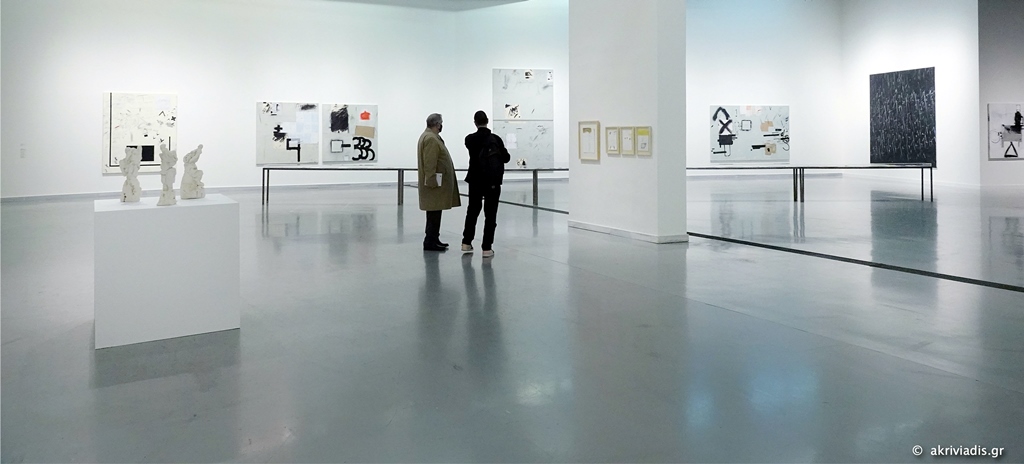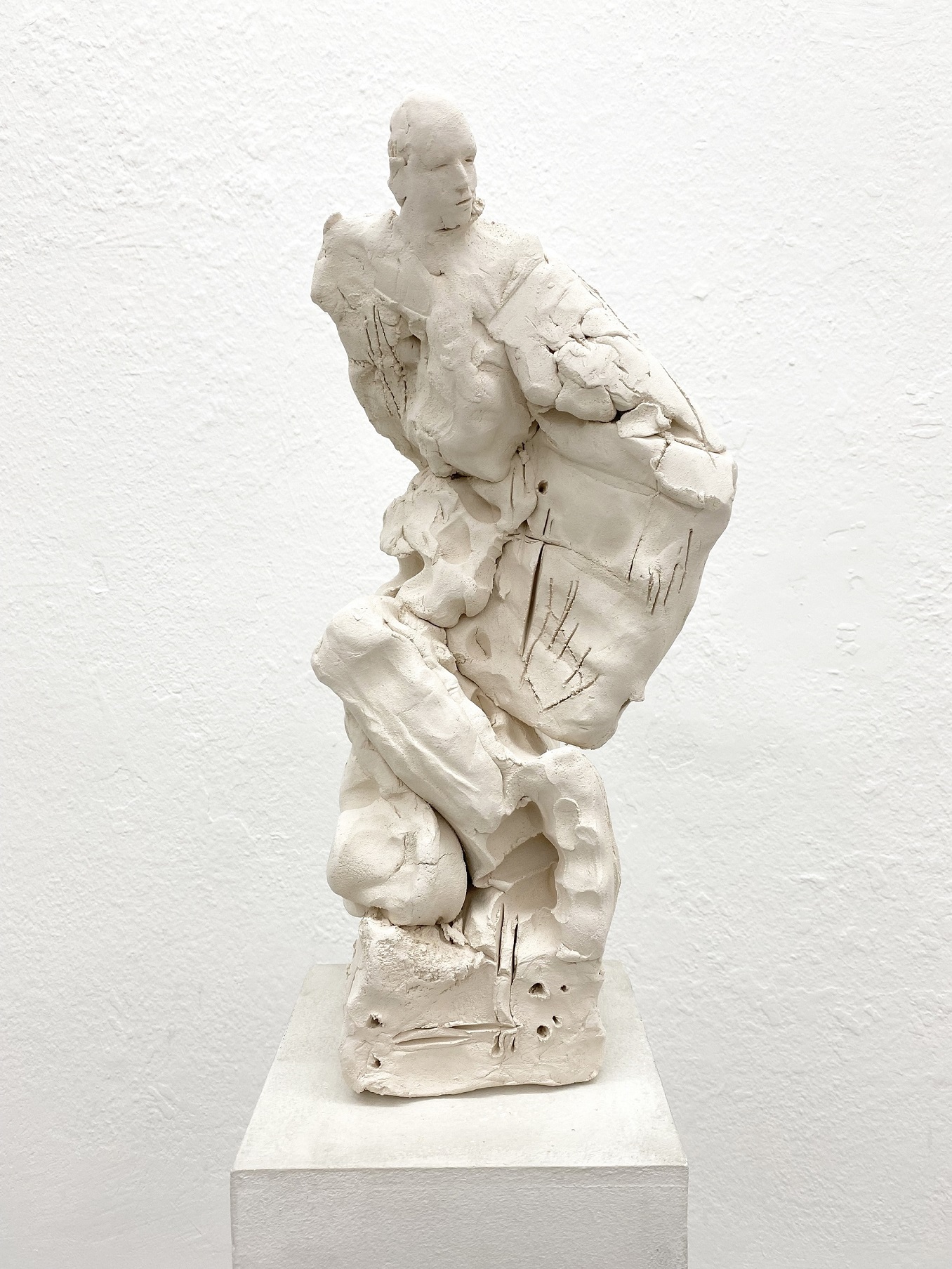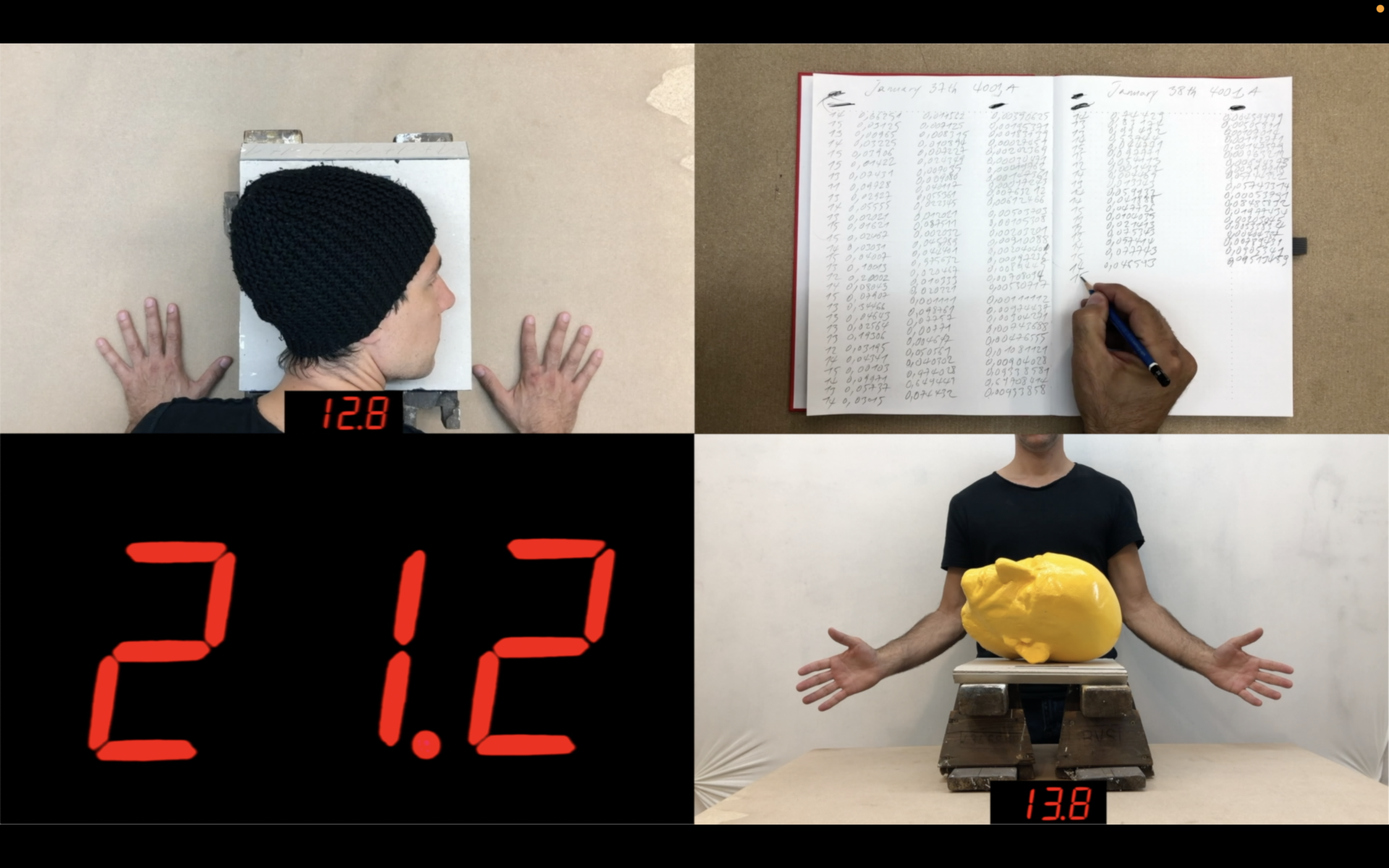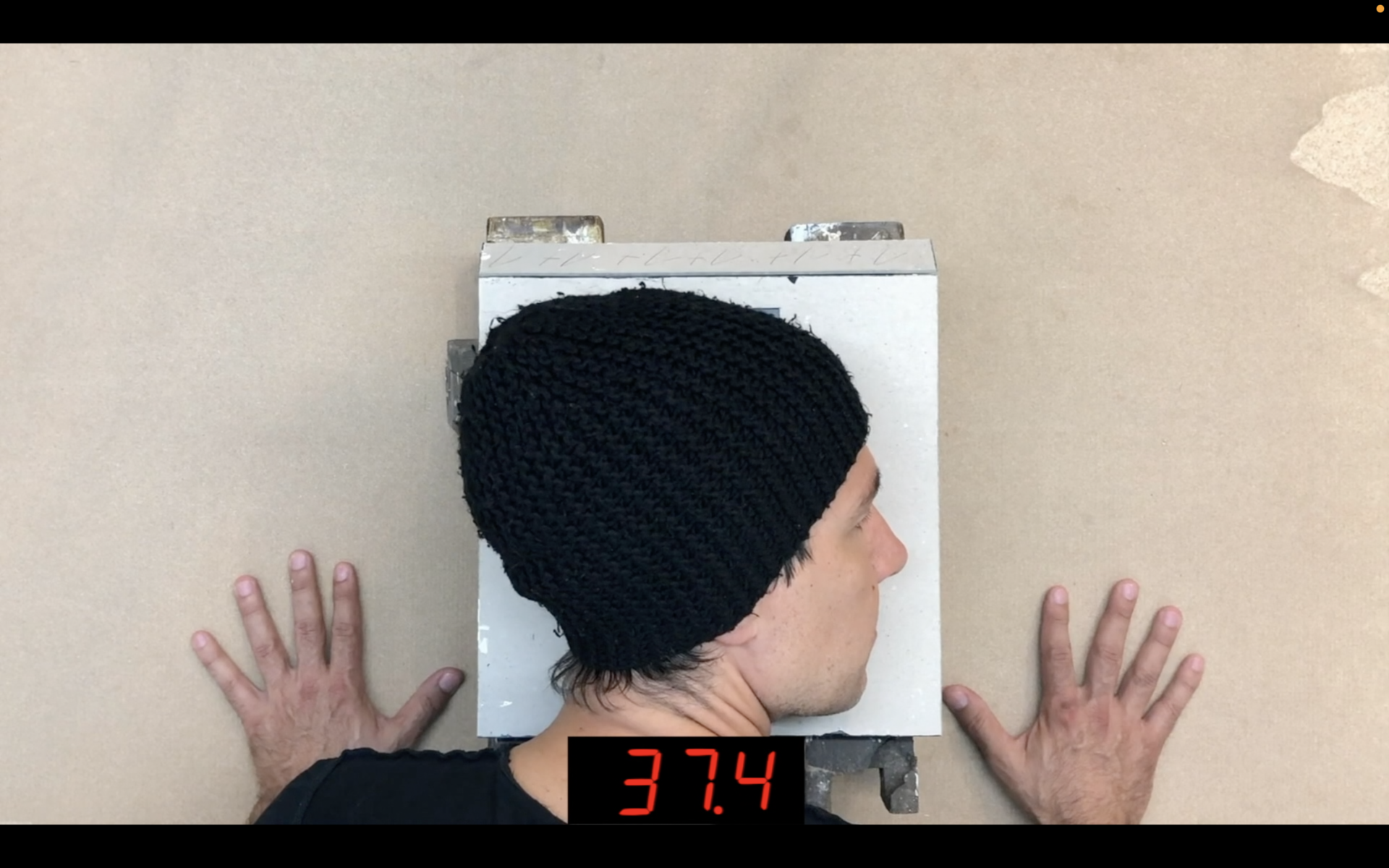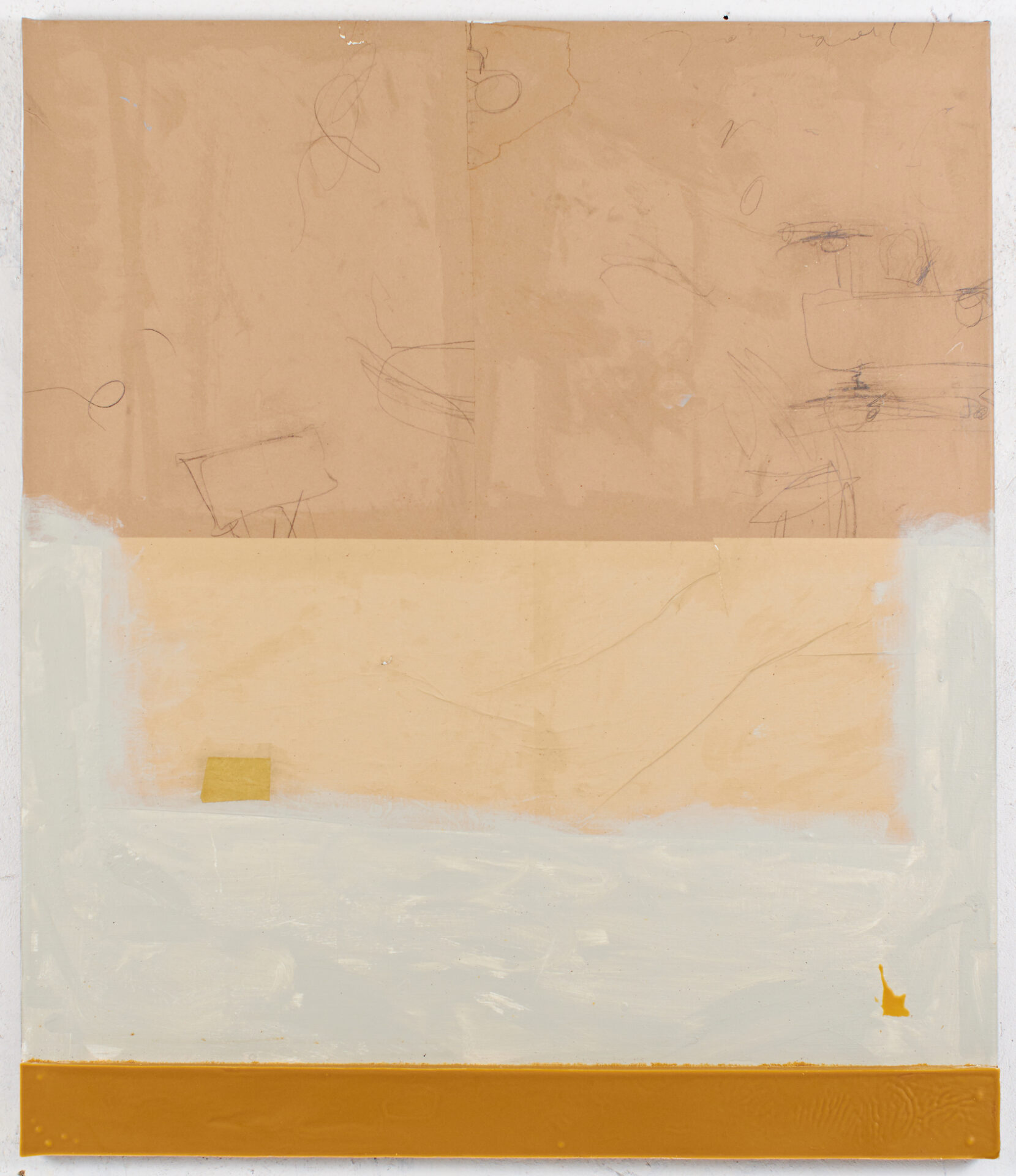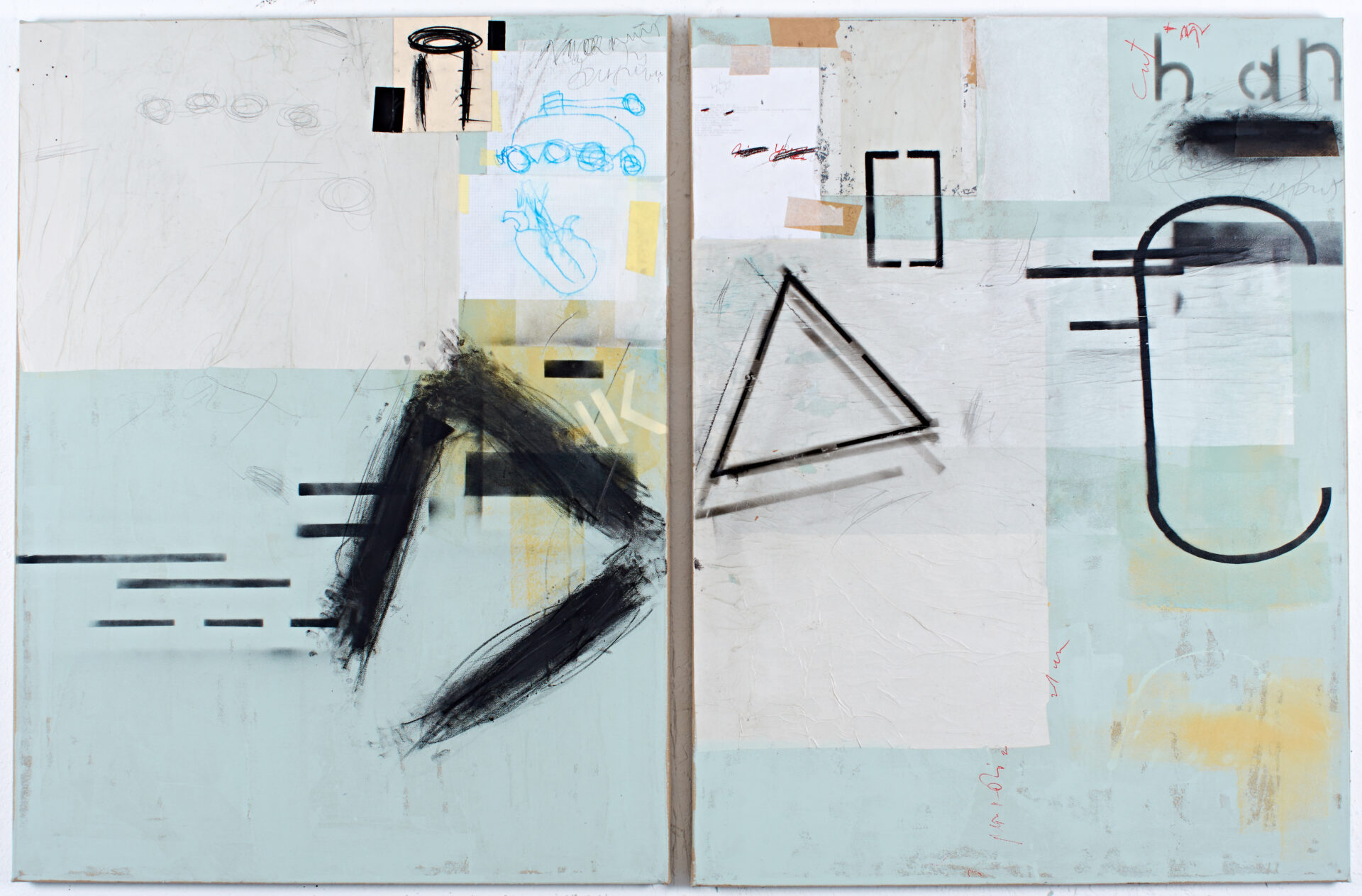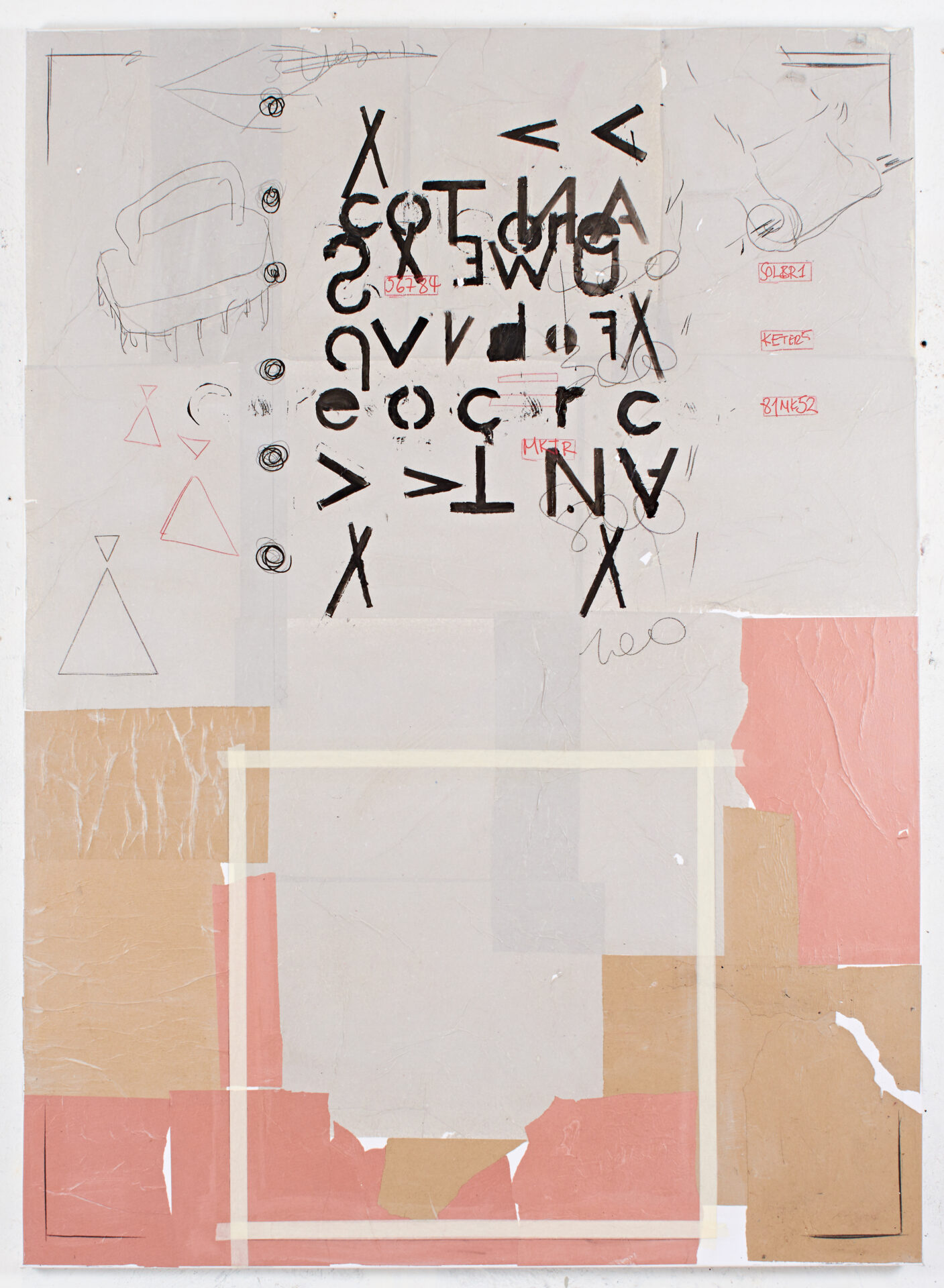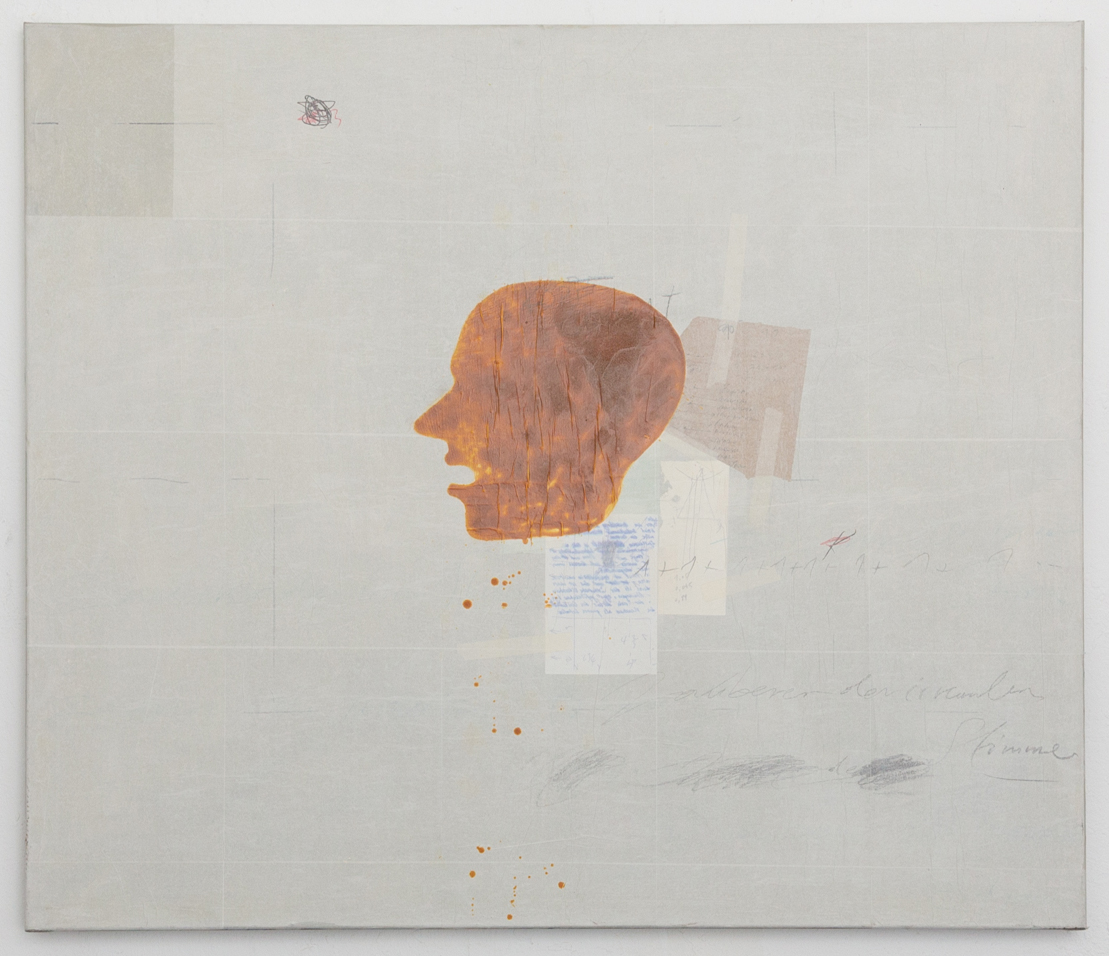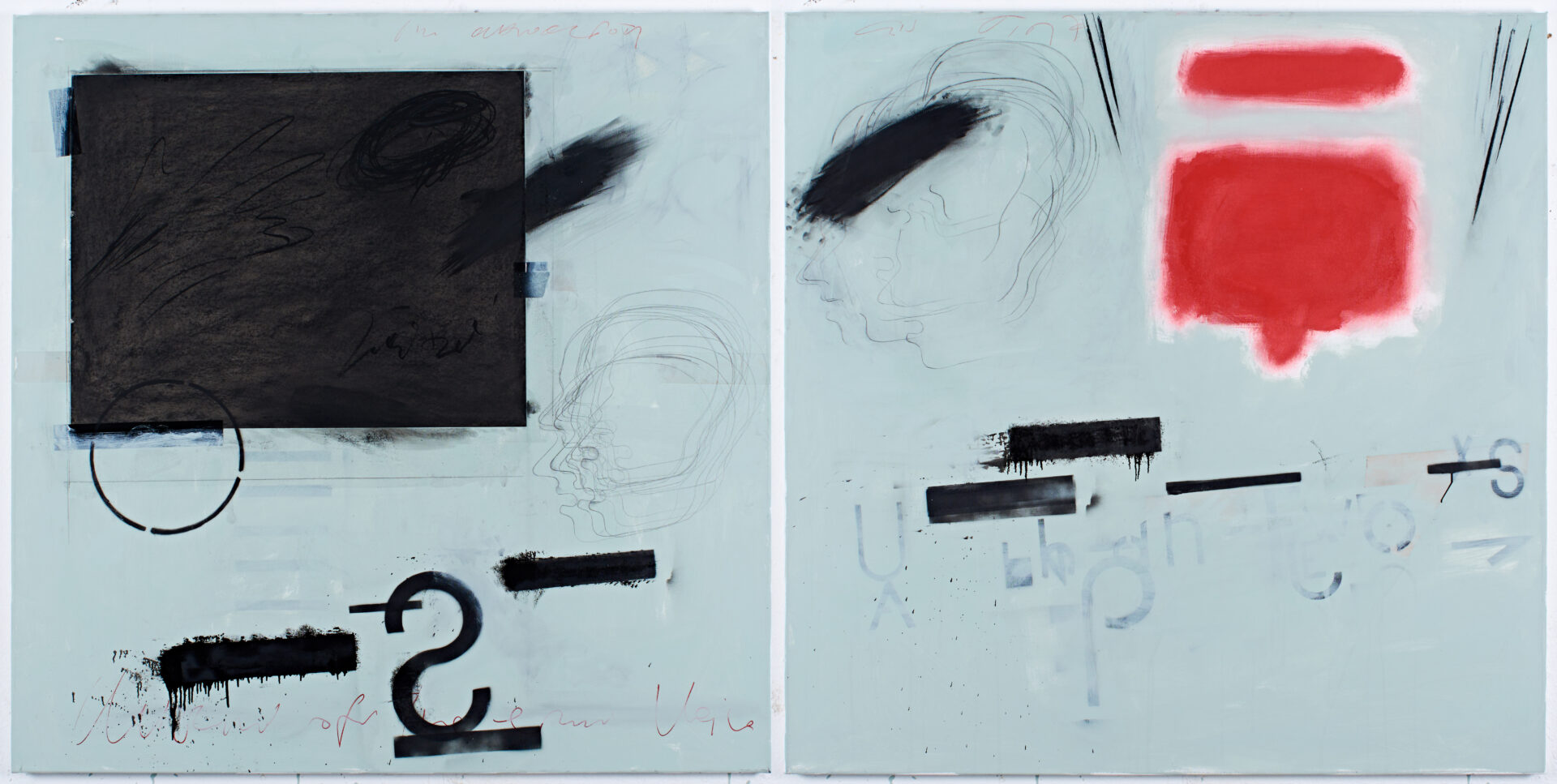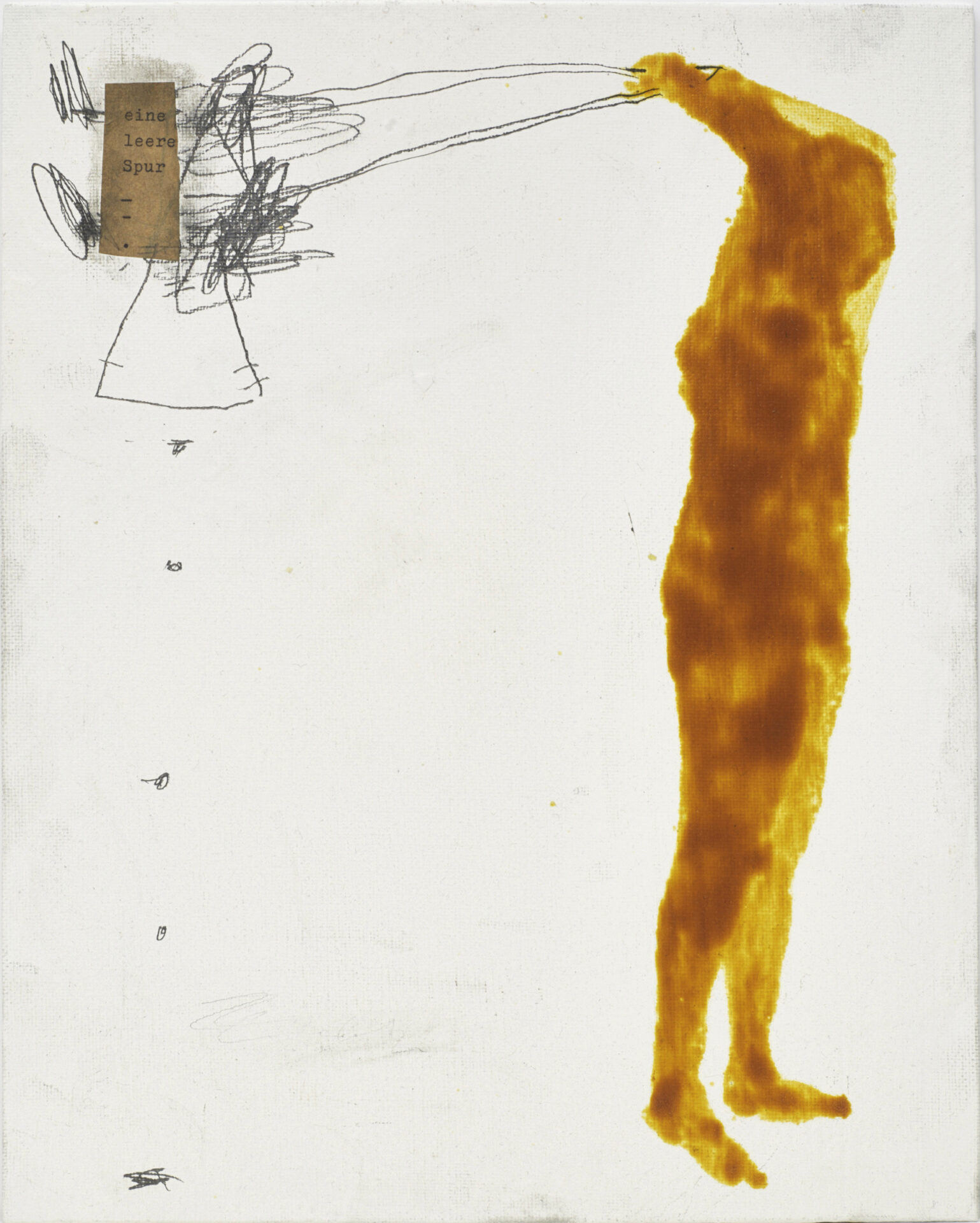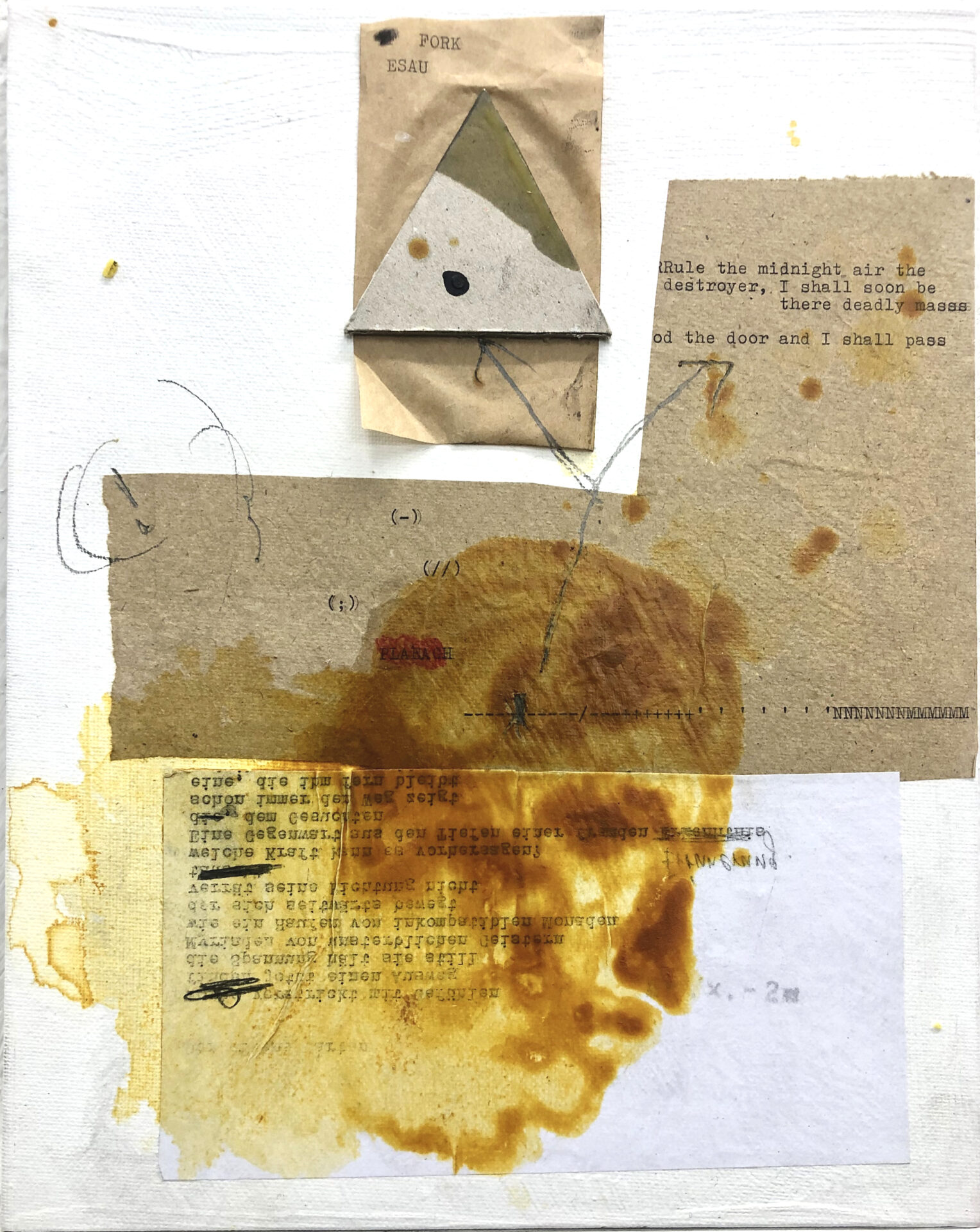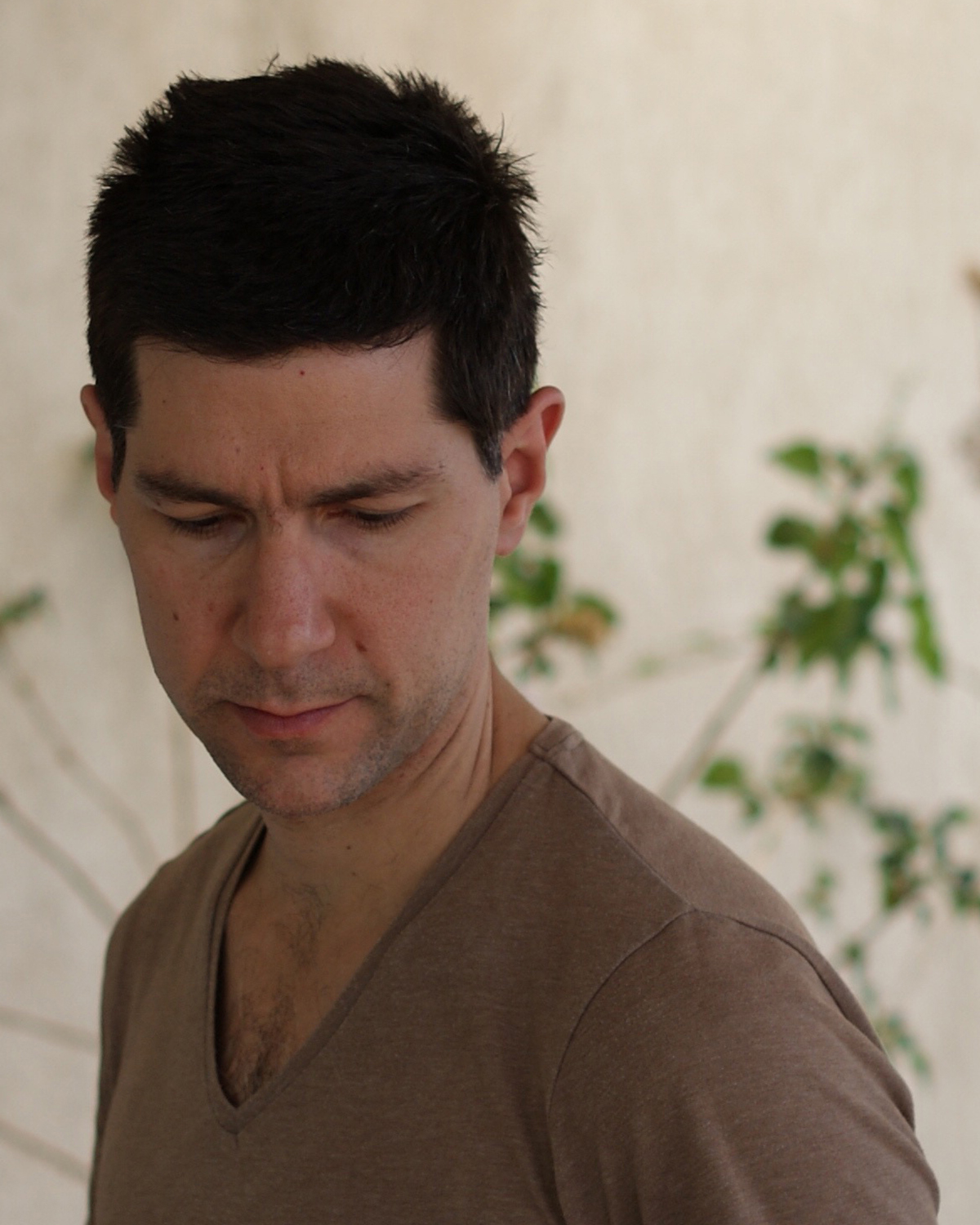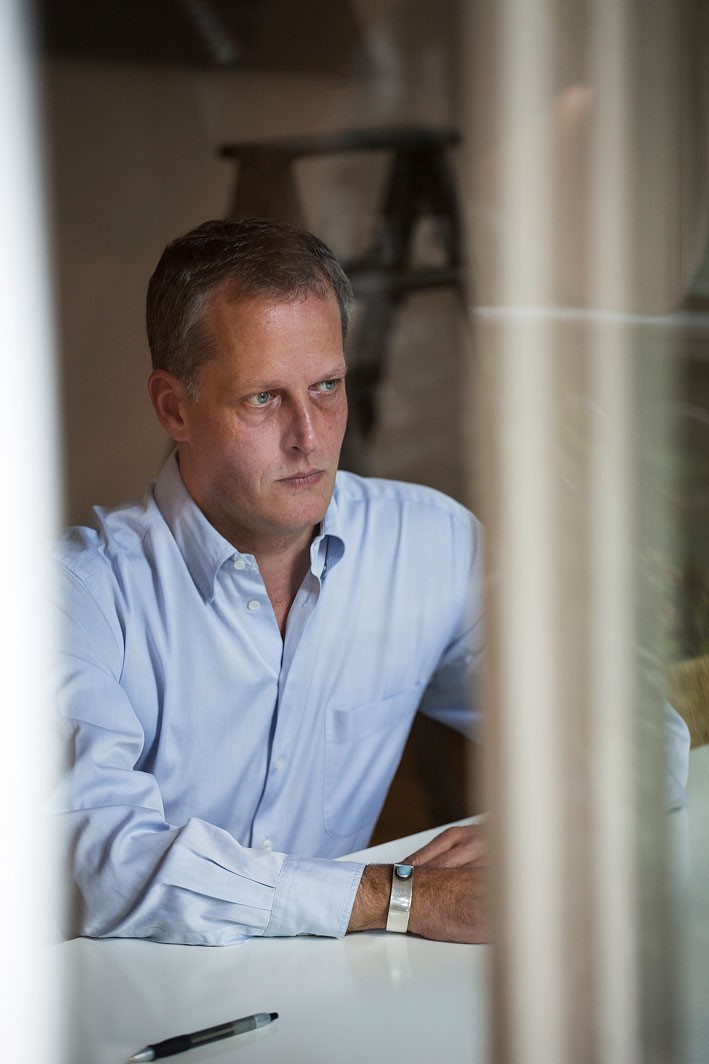The first institutional exhibition of Konstantinos Dregos in Greece maps out a vast artistic territory by bringing together paintings, collages, video-works, a new sound piece as well as recent sculptures. From different perspectives, all these works circle around a sincere interest in our conditio humana. Questions such as: What and how can we know? How and why errors, mistakes and misunderstandings often play a vital role in shaping inventive and creative processes? How can we live a life worth living given the limits of our knowledge and our fragmented understanding of human nature? build the conceptual framework of Dregos’ activities.
From its origins, his project has been as much an artistic adventure as a philosophical questioning, while both perspectives seem less engaged in providing eternal answers than focused on scrutinizing the foundations of canonical and current theories around his fields of interest.
A selection of works from two larger series of paintings, Labyrinth and Capto Vacui (Seizing the Void), build the backbone of the exhibition. Somewhere between drawing and painting, between science and myth and always with a rather subdued palette, these canvases are filled with allusions to seemingly complex, abstract formulations of inventive processes. Numbers, brief equations, fragments of architectural or other plans, words, diagrams, etc. appear embedded in, or juxtaposed with gestural and painterly areas of the canvases. It is the creative process of invention itself with all its errors and failings which is depicted here and there is something equally joyful and tragic about it. If Wittgenstein once said it was the task of philosophy to show the fly the way out of the fly-bottle, Dregos seems to question the very possibility of such an enterprise. Instead, he presents us with the chaotic beauty and power of various versions of such fly-bottles.
The video installation entitled The Preparation of the Cardinal addresses the absurdity and complexity of the human condition with a distinct sense of humor. While experiencing an existential crisis, hubris and lack of purpose lead a cardinal to devote the rest of his life to a questionable activity. In order to ascertain the absolute certainty of his own existence, he decides to weigh his head on a daily basis. Only if he can get two results which are exactly the same, can the cardinal end the process, fully convinced of the reality of his own being. In the Cardinal’s mind the scientific idea of measurability appears to replace the role of God in traditional belief systems. The work as a whole seems to suggest that neither a rational nor a mystic foundation will ever be able to eliminate fundamental uncertainty – we just have to learn to live with it.
A set of small sculptures entitled Proplasma celebrates the immediacy of the manipulation of their material foundation. Using identical blocks of clay as a starting point the works often show fragments of the human figure. Heads, other body parts or simple structures appear together with the raw marks left by the artist’s hands while forming the clay. Dregos did not bother to work out any of the details of these works – his sculptures look unfinished and that’s what they are. As soon as a vague but powerful expression emerged, the artistic process was interrupted, never to be resumed. Following Michelangelo’s verdict on the value of the unfinished, these sculptural sketches clearly belong to the Salon des Refusés. By undermining common expectations of craftsmanship and by abbreviating the traditional process of sculpture, Dregos’ approach questions the distinction between a concept and its implementation. The act and the idea of making these works merge inseparably and the errors, strokes of luck, and whatever else may happen during these simultaneous processes, constitute the quality of the results.


